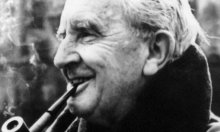It’s been almost a week since Sufjan Stevens knocked everyone’s socks off at the Orpheum in Vancouver.
I knew a whole bunch of people who were there, and I’ve spoken to a fair number since. It’s an intriguing show to talk about after the fact, for a bunch of reasons.
Particularly with long-time fans (or at least those who jumped aboard the bandwagon when
Illinois
came out), I like to begin conversations by asking,
Were you prepared for it?
And by that I mean,
Did you have a chance to hear the new albums prior to the show, and did you know he’d be doing so much new material?
I’m a pretty keen fan, so I got ahold of both
All Delighted People
and
The Age of Adz
soon after they were released. I listened to the former a number of times, the latter only once or twice. Then a few days before the show, I spent a few hours looking at set lists from previous shows on the tour, to get an idea of which tunes he’d be playing. I also read a few concert reviews.
Now, based on what I just wrote, some of you are thinking,
Oh, way to ruin the surprise, Nelson. A truly objective concert-goer wouldn’t do that.
Well, there may be an element of truth to that. But most people I know go to concerts because they
know
their favorite artists’ music inside-out, not to pay $50+ to go, ‘Um. What was
that
?’ This knowledge doesn’t detract from their enjoyment. It enhances it. So when you hear that an artist you admire has released music that seems to be a pretty significant departure from his or her best-known work, don’t you want to familiarize yourself with it – even a little – before spending the money to experience it live?
If you still disagree, too bad. That’s how I approached this show, and I’d do it all over again. And apparently I wasn’t alone. Nearly everyone I’ve talked to after the show answered ‘yes’ when asked if they were prepared for it.
But, as anyone who’s failed a driving test will know, there are degrees of preparedness.
Some weren’t sure how to take Sufjan using auto-tune and dancing around with neon wristbands and a t-shirt that said, “Be Mine” on the back. Others seemed to really like it. At one point, a guy way in the back shouted out, “We love your dance moves.” Some seemed surprised – even shocked – by larger-than-life moving images of volcanoes, spaceships and Amazon women being projected on a screen behind the band. On the other hand, people who were perhaps more
sonically
unprepared may have been relieved to have something to look at while the noisy unfamiliarity of the new music went on…and on. (One song, called
Impossible Soul,
went for about twenty-five minutes. That was a highlight for me.)
What of Sufjan’s new tunes themselves?
Are
they such a radical departure from his previous material?
That depends on which previous material you’re referring to. People forget (or perhaps don’t realize) that Sufjan’s body of work includes
a collection of programmatic, symphonic songs for the animals of the Chinese Zodiac called
Enjoy Your Rabbit.
One reviewer referred to it as “A hyper-modified Atari battling a souped-up ColecoVision in a chess match/battle royal.” Listen to that, then listen to
The Age of Adz
, and you quickly recognize that this isn’t Sufjan’s first venture into more electronic soundscapes. The main difference is that this time he’s singing along with the computer bleeps and zoinks.
I also think
All Delighted People
bears a lot of similarity to his best-loved work, in terms of lyricism, mood, harmonic and rhythmic elements. And while it’s not a concept album like
Illinois
or
Michigan,
what it holds in common with those is that it’s a collection of really interesting, varied songs – the best of which stand on their own apart from the project as a whole.
There was a lot to appreciate about my first Sufjan concert experience. In fact, I would probably rank it in my Top Five concerts of all time. I found it
that
good.
What did I like about it?
The trombone players were unbelievable. Their tone was crystal-clear, their pitch was perfect, and they were playing really high notes for a
really
long time
.
I’ve always found Sufjan’s arrangements compelling. They help me remember why I love music. But seeing these new songs come to life with an eleven-piece band, who obviously share the same admiration for their bandleader and are passionate about what they’re doing was a huge treat.
For all the noisy, in-your-face new material (which I’m digging more all the time), I felt he balanced well the huge, epic, all-hands-on-deck songs with his softer, more melodic ballads. His quavering voice was as beautiful as ever. He introduced the first of these,
Heirloom,
as a “palate cleanser”. [By the way, for those who care, here’s the
setlist
from that night.]
The backup singer/dancers were also incredible. I expected them to be great singers and harmonizers, which they were. What I didn’t expect was to see that much cool choreography at a Sufjan Stevens concert.
The visuals evoked worlds that were strange at times – apocalyptic, even – but boy, were they impressive. It was part-movie, part-concert, and I thought they added a lot to the experience. Especially after Sufjan gave a little bit of context to them.
And yet, for all my happy preparedness, what surprised me most stemmed from when Sufjan took about eight minutes in the middle of the concert to talk about his approach to creating the new record.
It wasn’t so much
what
he said. I already knew of his being inspired by the bizarre story and eccentric artwork of
Royal Robertson
. And it certainly wasn’t
how long
he took to say it, although I feel something profound was communicated even through that.
It had more to do with what
wasn’t
said, yet later dawned on me once the evening was over.
Sufjan explained that for this album, at least, he wanted to strip away constructs like ‘concept’ or ‘narrative’ (which he employed with great intentionality on his Fifty States albums) and simply explore ‘sound’ in a more ‘primitive way’.
That may well have worked as a starting off point. But what became obvious to me while he shared, with much patience and sympathy, about an American artist named Royal Robertson who was afflicted by schizophrenia, and how Royal’s experience resonated with his own interior pain, heartache, suffering and loneliness, was how much he
needed
story in order to create. Sufjan may have succeeded in letting go of ‘narrative’ to
begin
the songwriting process, but to me it seems that it didn’t take long before
story
found
him
, took hold of him and helped him complete the journey.
Remember that twenty-five minute song I mentioned before? During one concert, Sufjan introduced it by saying it was “like a psychotic behavioral treatment, but in public. I’m going through some things.”
I am realizing that when I “go through things,” I tend to hang onto story real tight. Even minor things. Like if I’m sick in bed with a headcold, movies and novels are always close at hand, and not just to pass the time. They may be ‘escape’ in one sense, but I like to think of stories as escape in the
best
possible sense. When you
lose
yourself in someone else’s story for a time, the hope is that you’ll
find
(at least a bit more of) yourself once the story is finished.
It would surprise me if Sufjan hasn’t realized this – both his general need for story as well as how narrative informed his current project despite his efforts
not
to have it be so. He strikes me as an intelligent, thoughtful, self-aware guy. And maybe this isn’t such a remarkable discovery as I think it is. But at the very least, I hope I’ve learned some things. Like how vital story is to all our artmaking efforts. Like how much I need story all the time.
And I’m deeply grateful that Sufjan was willing to share something about his own artistic process. These discoveries may not have happened if he hadn’t been willing to let us all inside his own story just a little.
Nelson Boschman
November 2010



